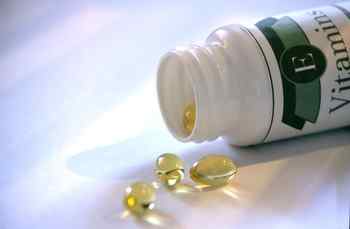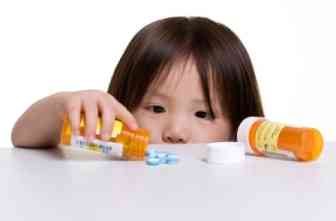1. Sodium Nitrate (also called Sodium Nitrite) This is a preservative, coloring, and flavoring commonly added to bacon, ham, hot dogs, luncheon meats, smoked fish, and corned beef. Studies have linked eating it to various types of cancer.
2. BHA and BHT
Butylated hydroxyanisole and butylated hydrozyttoluene are used to preserve common household foods. They are found in cereals, chewing gum, potato chips, and vegetable oils. They are oxidants, which form potentially cancer-causing reactive compounds in your body.
3. Propyl Gallate
Another preservative, often used in conjunction with BHA and BHT. It is sometimes found in meat products, chicken soup base, and chewing gum. Animals studies have suggested that it could be linked to cancer.
4. Monosodium Glutamate (MSG)
MSG is an amino acid used as a flavor enhancer in soups, salad dressings, chips, frozen entrees, and restaurant food. It can cause headaches and nausea, and animal studies link it to damaged nerve cells in the brains of infant mice.
5. Trans Fats
Trans fats are proven to cause heart disease. Restaurant food, especially fast food chains, often serve foods laden with trans fats.
6. Aspartame
Aspartame, also known by the brand names Nutrasweet and Equal, is a sweetener found in so-called diet foods such as low-calorie desserts, gelatins, drink mixes, and soft drinks. It may cause cancer or neurological problems, such as dizziness or hallucinations.
7. Acesulfame-K
This is a relatively new artificial sweetener found in baked goods, chewing gum, and gelatin desserts. There is a general concern that testing on this product has been scant, and some studies show the additive may cause cancer in rats.
8. Food Colorings: Blue 1, 2; Red 3; Green 3; Yellow 6
Five food colorings still on the market are linked with cancer in animal testing. Blue 1 and 2, found in beverages, candy, baked goods and pet food, have been linked to cancer in mice. Red 3, used to dye cherries, fruit cocktail, candy, and baked goods, has been shown to cause thyroid tumors in rats. Green 3, added to candy and beverages, has been linked to bladder cancer. The widely used yellow 6, added to beverages, sausage, gelatin, baked goods, and candy, has been linked to tumors of the adrenal gland and kidney.
9. Olestra
Olestra, a synthetic fat found in some potato chip brands, can cause severe diarrhea, abdominal cramps, and gas. Olestra also inhibits healthy vitamin absorption from fat-soluble carotenoids that are found in fruits and vegetables.
10. Potassium Bromate
Potassium bromate is used as an additive to increase volume in some white flour, breads, and rolls. It is known to cause cancer in animals, and even small amounts in bread can create a risk for humans.
11. White Sugar
Watch out for foods with added sugars, such as baked goods, cereals, crackers, sauces and many other processed foods. It is unsafe for your health, and promotes bad nutrition.
12. Sodium Chloride
A dash of sodium chloride, more commonly known as salt, can bring flavor to your meal. But too much salt can be dangerous for your health, leading to high blood pressure, heart attack, stroke, and kidney failure.
Americans spend about 90 percent of their food budget on processed foods, which contain a staggering number of artificial food additives, preservatives, colors and flavor enhancers. That your health suffers as a consequence of this assault should come as no surprise.
To review each of the mere dozen mentioned here could fill several books, and would still only be the tip of the iceberg. As you may already know, I wrote an entire book just on artificial sweeteners, called Sweet Deception. The book is currently out of print as we sold out of the last edition, but we hope to have it back in print by the fall.
However, when it comes to food additives, perhaps one of the most important aspects is the health ramifications they have on your children.
New Study Confirms What Astute Parents Have Known for Years
The issue of whether or not food additives such as artificial colors contribute to behavioral problems in children has been disputed for many years. Fortunately, this may soon change.
A carefully designed randomized, double-blind, placebo-controlled study published in the journal The Lancet last year may have finally shifted the tide (for a free PDF of the full study see this link).
It concluded that a variety of common food dyes, and the preservative sodium benzoate – found in many soft drinks, fruit juices and salad dressings – do cause some children to become measurably more hyperactive and distractible.
The seven ingredients tested in the study included:
- Sodium benzoate (E211)
- Sunset yellow (E110)
- Quinoline yellow (E104)
- Carmoisine (E122)
- Tartrazine (E102)
- Ponceau 4R (E124)
- Allura red AC (E129)
The results of this study have already prompted the British Food Standards Agency (FSA) to issue an immediate advisory to parents, warning them to limit their children's intake of additives if they notice an effect on behavior.
Unfortunately, but not surprisingly, the U.S. has not issued any similar warnings.
The worst behavioral responses from the additives were seen in the three-year-olds, compared to the older children in the study. But even within each age group, some children responded very strongly, and others not at all, indicating there are individual differences in how well your body can tolerate the assault of artificial additives. One theory is that the additives may trigger a release of histamines in certain sensitive kids.
Still, I believe that food additives such as preservatives, sweeteners and colorings should be avoided as much as possible, regardless of whether they have a marked effect or not as they clearly have no redeeming nutritional value, and can carry major long-term health risks.
Food Colors May be as Damaging as Lead in Gasoline on Children’s Brains
Another recent article, published in the British magazine The Independent on April 5 2008, reported that artificial food colors (but not the preservative sodium benzoate) are now set to be removed from hundreds of products in the UK because the results of the study mentioned above also indicate that the E-numbers do as much damage to children's brains as lead in gasoline, resulting in a significant reduction in IQ.
The lead author, Professor Stevenson, and his three colleagues have stated:
"The position in relation to AFCs [Artificial Food Colors] is analogous to the state of knowledge about lead and IQ that was being evaluated in the early 1980s ... Needleman [a researcher] found the difference in IQ between high and low lead groups was 5.5 IQ points ... This is very close to the sizes obtained in our study of food additives."
Officials at the British FSA are advising the food industry to voluntarily remove the six food dyes named in the study by the end of 2009, and replace them with natural alternatives if possible.
True to form, the food industry claims the additives are used in a mere “handful” of products, but the website ActionOnAdditives.com has already identified more than 1,000 food products that contain them – most of which are targeted at children.
BEWARE -- Already Banned Food Additives Still Found in Children’s Medicines
Another thing you need to be aware of, as a parent, is that when an ingredient is banned for use in food, it is not automatically banned for use in other areas such as medicine.
According to an expose’ by the British Food Commission last year, food additives that have already been banned for use in food and beverages are still used in a majority of pediatric over-the-counter medicines.
Their survey found that ALL BUT ONE medicine out of 41 contained an additive that had been banned.
The additives found in these drugs included:
- Synthetic azo dyes
- Maltitol and sorbitol
- Benzoate and sulphite preservatives
- Chloroform
The justification for using these toxic compounds is what you'd typically expect from an over-the-counter pharmaceutical trade group: Unlike foods, additives in medicines are used in small quantities and are only taken for a short time.
Does that make you feel any better?
This is just one more reason why it’s so important to question what your doctor or any other health professional may prescribe or recommend for your child, no matter what side of the counter it comes from, as many pediatric drugs can certainly be harmful, if not downright toxic to your child’s health.
Sugar and Salt
White sugar is named in the list above but I would have to disagree and identify high fructose corn syrup (HFCS) as far more problematic than white cane sugar. HFCS is the number one source of calories in the U.S. and causes far more damage than white sugar.
Salt is another challenge, as it can and is a health food for many, but it needs to be the right type of salt. Nearly all commercial salt is highly processed and heated to very high temperatures and has many additives added, which are also potentially toxic. So it would be wise to avoid processed foods with conventional salt added.
However, unprocessed salts, like unrefined sea salts and Himalayan salt can be an important part of a healthy diet. Personally, it is uncommon for a day to go by in which I don’t use Himalayan salt. I am a protein nutritional type and tend to do better with high quality salt.



 Taking high doses of vitamin E supplements can actually increase the risk of lung cancer.
Taking high doses of vitamin E supplements can actually increase the risk of lung cancer. 
 In 2004 and 2005, adverse drug events were the third leading cause of nonfatal injuries among infants treated in hospital emergency departments. They were also the sixth leading cause of nonfatal injuries among children 1 to 4 years old.
In 2004 and 2005, adverse drug events were the third leading cause of nonfatal injuries among infants treated in hospital emergency departments. They were also the sixth leading cause of nonfatal injuries among children 1 to 4 years old.